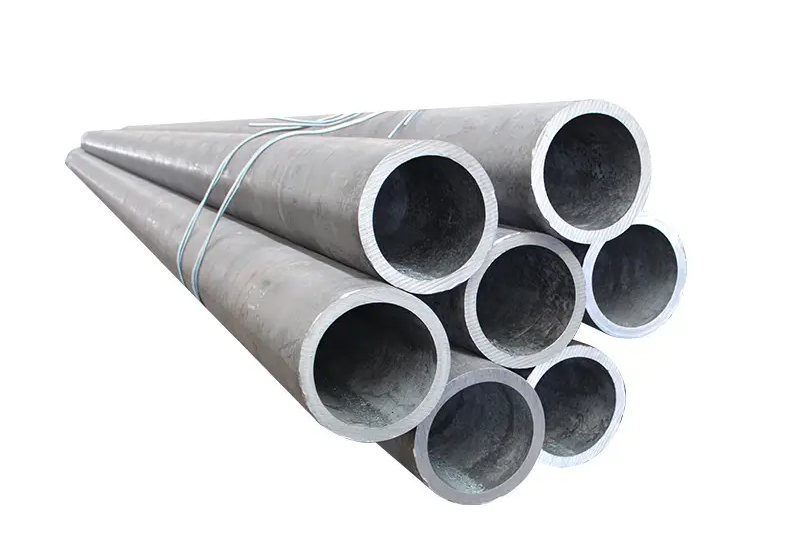
Kaedah untuk mengimpal saluran paip berdinding tebal tekanan tinggi keluli A335 P91 domestik: bidang teknikal – Ciptaan sekarang berkaitan dengan bidang teknologi kimpalan, khususnya yang berkaitan dengan kaedah untuk mengimpal saluran paip berdinding tebal tekanan tinggi keluli A335 P91 domestik.
Kami mempunyai inventori Terbesar ASTM A335 P91 Alloy Steel Seamless Pipe
Paip Keluli Aloi A 335 P91:
Saiz : 1/2″ untuk 24 “DAN DARI & NB
Jadual: SCH20, Sch30, SCH40.
Jenis : Golek / Direka / LANCAR
Panjang : Rawak Tunggal, Rawak Berganda & Panjang Potong.
akhir : Akhir Biasa, Hujung Serong.
Bahan-bahan :
Paip Keluli Aloi A335 P91 – Paip AS A335 P91
ASTM A335, Gr. P5, P9, P11, P12, P21, P22 & P91
ASTM A335 P91 Komposisi Paip Chrome
| Gred | UNS | C≤ | MN | P ibu | S ibu | Si≤ | Cr | Mo |
| P1 | K11522 | 0.10~0.20 | 0.30~0.80 | 0.025 | 0.025 | 0.10~0.50 | – | 0.44~0.65 |
| P2 | K11547 | 0.10~0.20 | 0.30~0.61 | 0.025 | 0.025 | 0.10~0.30 | 0.50~0.81 | 0.44~0.65 |
| P5 | K41545 | 0.15 | 0.30~0.60 | 0.025 | 0.025 | 0.50 | 4.00~6.00 | 0.44~0.65 |
| P5b | K51545 | 0.15 | 0.30~0.60 | 0.025 | 0.025 | 1.00~2.00 | 4.00~6.00 | 0.44~0.65 |
| P5c | K41245 | 0.12 | 0.30~0.60 | 0.025 | 0.025 | 0.50 | 4.00~6.00 | 0.44~0.65 |
| P9 | S50400 | 0.15 | 0.30~0.60 | 0.025 | 0.025 | 0.50~1.00 | 8.00~10.00 | 0.44~0.65 |
| P11 | K11597 | 0.05~0.15 | 0.30~0.61 | 0.025 | 0.025 | 0.50~1.00 | 1.00~1.50 | 0.44~0.65 |
| P12 | K11562 | 0.05~0.15 | 0.30~0.60 | 0.025 | 0.025 | 0.50 | 0.80~1.25 | 0.44~0.65 |
| P15 | K11578 | 0.05~0.15 | 0.30~0.60 | 0.025 | 0.025 | 1.15~1.65 | – | 0.44~0.65 |
| P21 | K31545 | 0.05~0.15 | 0.30~0.60 | 0.025 | 0.025 | 0.50 | 2.65~3.35 | 0.80~1.60 |
| P22 | K21590 | 0.05~0.15 | 0.30~0.60 | 0.025 | 0.025 | 0.50 | 1.90~2.60 | 0.87~1.13 |
| P91 | K91560 | 0.08~0.12 | 0.30~0.60 | 0.020 | 0.010 | 0.20~0.50 | 8.00~9.50 | 0.85~1.05 |
| P92 | K92460 | 0.07~0.13 | 0.30~0.60 | 0.020 | 0.010 | 0.50 | 8.50~9.50 | 0.30~0.60 |
Piawaian Komposisi Paip A335 Gr P91
| Si, % | Cr, % | C, % | Mo, % | MN, % | P, % | N, % | S, % | V, % | Ni, % | NB, % | Al, % |
| 0.2 untuk 0.5 | 8.0 untuk 9.5 | 0.08 untuk 0.12 | 0.85 untuk 1.05 | 0.3 untuk 0.6 | 0.02 | 0.03 untuk 0.07 | 0.01 | 0.18 untuk 0.25 | 0.4 | 0.06 untuk 0.10 | 0.04 |
Jadual Kekuatan Mekanikal Paip ASTM A335 P91
| memanjang | Sifat Tegangan | HB | Sifat Hasil |
| 20 | 585 | 250 | 415 |
Gred Bahan Setara Paip SA335 Gr P91
| UNS | ASTM | Bersamaan Bahan | PERSATUAN JURUTERA MEKANIKAL AMERIKA |
|---|---|---|---|
| K91560 | A335 P91 | K90901, T91, 1.4903, X10CrMoVNb9-1 | SA335 P 91 |
| ASTM | PERSATUAN JURUTERA MEKANIKAL AMERIKA | JIS G 3458 | UNS | BS | DARIPADA | ISO | ABS | NK | LRS |
|---|---|---|---|---|---|---|---|---|---|
| A335 P9 | SA335 P9 | STPA 26 | S50400 | 3604 P1 629-470 | 2604 II TS38 |
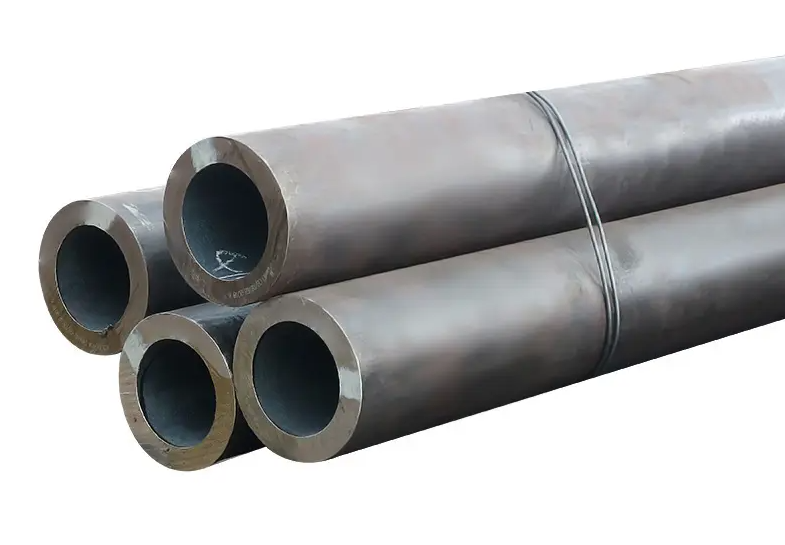
Latar belakang: Keluli A335 P91 ialah keluli 9Cr-1Mo yang diubah suai, terutamanya incorpo
A335P11 A335P91 A335P22 40cr 10CrMO910 35crmo 27SiMn Q345B 16Mn Paip Keluli Aloi Dikimpal
penarafan unsur aloi seperti V dan Nb ke dalam keluli tahan haba martensit 9Cr-1Mo asal. Keluli ini mempunyai rintangan pengoksidaan suhu tinggi yang sangat baik, rintangan kakisan wap suhu tinggi, dan rintangan rayapan, mengurangkan berat struktur dengan berkesan dan mencari aplikasi yang meluas dalam unit dandang yang besar, sistem saluran paip, dan industri petrokimia. bagaimanapun, disebabkan oleh sifat martensit yang disejukkan udara bagi keluli A335 P91, ia mempamerkan keplastikan yang lebih rendah dan kebolehkimpalan yang lebih lemah, mengenakan keperluan yang tinggi pada proses kimpalan, keliatan hentaman sambungan yang dikimpal, kerapuhan kimpalan, rawatan haba selepas kimpalan, dan zon kimpalan yang terjejas haba. Kimpalan keluli A335 P91 tradisional secara amnya menggunakan kimpalan arka tungsten gas manual (GTAW) untuk pas akar dan kimpalan arka logam terlindung manual (SMAW) untuk pengisian dan penutup, memerlukan kawalan ketat tenaga talian, panaskan suhu, dan suhu interpass semasa proses kimpalan. Kaedah ini memerlukan persekitaran kimpalan dan kemahiran pengimpal yang tinggi, dan kecekapan kimpalan manual adalah sangat rendah, memakan masa dan usaha, sangat menyekat kemajuan paip, menjejaskan jadual pembinaan, dan amat ketara untuk saluran paip berdinding tebal berdiameter besar.
Oleh itu, pemilihan rasional parameter dan proses kimpalan untuk keluli A335 P91 dan pembangunan keadaan proses kimpalan yang sesuai untuk pengeluaran memegang nilai praktikal dan ekonomi yang ketara.
Kandungan Reka Cipta: Untuk mengatasi kelemahan teknologi sedia ada, masalah teknikal yang perlu diselesaikan oleh ciptaan ini adalah untuk menyediakan kaedah untuk mengimpal saluran paip berdinding tebal tekanan tinggi keluli A335 P91 domestik, bertujuan untuk meningkatkan kecekapan kimpalan dan kimpalan kualiti, mengurangkan kos pembinaan dan keamatan buruh, dan menambah baik persekitaran kerja.
Bagi mencapai objektif di atas, ciptaan sekarang menggunakan penyelesaian teknikal berikut:
Kaedah untuk mengimpal saluran paip berdinding tebal tekanan tinggi keluli A335 P91 domestik, yang terdiri daripada langkah-langkah berikut mengikut urutan:
(1) Pemprosesan serong pra-kimpalan: Proseskan kawasan kimpalan saluran paip untuk dikimpal menjadi serong berbentuk V berganda, lakukan pemeriksaan penembus pewarna pada permukaan serong untuk memastikan tiada permukaan retak, dan bersihkan serong dan karat permukaan, minyak, dan oksida dalam kawasan 20mm pada kedua-dua belah serong;
Meneruskan kaedah kimpalan untuk paip keluli berdinding tebal A335 P91 yang dihasilkan di dalam negara:
- rawatan haba selepas kimpalan: Selepas mengimpal, tutup kedua-dua hujung paip dan gunakan pemanas elektrik untuk memanaskan kawasan pada kedua-dua belah kimpalan, sekurang-kurangnya 3 kali lebar kimpalan dan tidak kurang daripada 25mm. Panaskan kawasan itu pada julat suhu 750-770°C dan tahankannya 2.5-4 jam, bergantung pada ketebalan paip.
Sila ambil perhatian bahawa suhu dalam kaedah ini dipantau menggunakan termometer inframerah. Kaedah kimpalan untuk paip keluli berdinding tebal A335 P91 tekanan tinggi ini mempunyai kelebihan berikut:
-
Penggunaan pelbagai lapisan, kimpalan berbilang laluan mengurangkan luas keratan rentas setiap lapisan kimpalan, meningkatkan keliatan sambungan yang dikimpal dan mengelakkan penyempitan zon yang terjejas oleh haba dalam kimpalan tebal, serta pelembutan sambungan kimpalan semasa operasi jangka panjang pada suhu tinggi.
-
Kimpalan arka tungsten gas manual (GTAW) untuk kimpalan akar mempunyai kelajuan kimpalan yang lebih perlahan, dan pengedap kedua-dua hujung paip membantu mengawal suhu interlayer. Kimpalan arka tenggelam automatik (MELIHAT) untuk mengisi dan menutup lapisan mempunyai kelajuan kimpalan yang lebih cepat dan arus yang lebih tinggi, membebaskan haba dengan lebih cepat. Sekurang-kurangnya satu hujung paip hendaklah dibuka, dan kimpalan berterusan boleh dilakukan tanpa memerlukan kawalan suhu interlayer.
-
Menggunakan wayar kimpalan berdiameter kecil (tidak lebih daripada 2.5mm) dan fluks hidrogen rendah untuk kimpalan boleh mengurangkan tenaga linear semasa proses kimpalan, meningkatkan kadar pemendapan kimpalan, menapis butiran bahan asas, dan mengurangkan kemungkinan kecacatan seperti keliangan dan keretakan pada kimpalan.
-
Dalam persekitaran berangin, kesan perlindungan kimpalan arka tenggelam automatik adalah lebih baik daripada proses kimpalan arka lain.
-
Berbanding dengan kaedah kimpalan manual tradisional, kaedah ini berkesan memendekkan rawatan haba dan kitaran kimpalan, Meningkatkan kimpalan kualiti dan kecekapan kimpalan, mengurangkan intensiti buruh, dan menjimatkan kos pembinaan.
Contoh pelaksanaan 1: Menggunakan saluran paip A335P91 domestik DN350 sebagai bahan asas, Kaedah kimpalan berikut diterima pakai:
(1) Kawasan kimpalan paip yang akan dikimpal diproses menjadi alur berbentuk dua v seperti yang ditunjukkan dalam angka 1, dengan ketinggian tepi tumpul 1mm, sudut bawah 60 ± 5 ° ke arah panjang paip, ketinggian 15mm, dan sudut atas 78-82 ° ke arah panjang paip. Permukaan alur diperiksa untuk memastikan tiada keretakan permukaan di alur. Karat permukaan, Noda Minyak, oksida, dan lain-lain. dalam 20mm di kedua -dua belah alur dibersihkan;
(2) Kedua -dua bahagian paip yang dikimpal dipasang, memastikan bahawa jurang muka akhir sendi pantat adalah 3-6mm, ketinggian adalah sekata, dan penjajaran tidak lebih daripada 1mm;
(3) Kimpalan arka argon manual GTAW digunakan untuk kimpalan bawah. Sebelum mengimpal, port hujung paip yang hendak dikimpal disekat, dan dinding dalam atau belakang kimpalan diisi dengan gas argon untuk perlindungan. Paip keluli yang akan dikimpal dipanaskan terlebih dahulu, dan suhu alur dipantau dalam masa nyata menggunakan termometer inframerah. Apabila suhu mencapai 160 ℃, kimpalan bermula, menggunakan dawai kimpalan ER90S-B9 dengan diameter untuk mengimpal tiga lapisan. Parameter proses dipilih seperti berikut: Sambungan positif DC bekalan kuasa, arus kimpalan 118A, voltan arka 14V, dan kelajuan kimpalan 3-10cm/min. Perhatian harus diberikan kepada perkara berikut semasa kimpalan arka argon manual GTAW: A) Permukaan bahan kerja yang dikimpal tidak boleh dinyalakan oleh arka, diuji untuk semasa, atau dikimpal sementara untuk menyokong atau mengepung;b) Kimpalan arka argon manual bermula dari titik terendah paip untuk dikimpal, dan dikimpal secara simetri oleh dua orang, Dengan sendi kimpalan terhuyung-huyung antara 100-150mm; C) Semasa kimpalan arka argon manual, Suhu yang dipanaskan di kedua-dua belah alur harus dipantau secara real-time, dan suhu preheating harus dikawal ketat antara 150 ℃ dan 200 ℃; D) Semasa kimpalan arka argon manual, Langkah -langkah perlindungan angin harus diambil, dan kelajuan angin dalam persekitaran kimpalan tidak boleh melebihi 2m/s. Tidak ada draf di paip yang akan dikimpal, dan kelembapan, hujan, dan langkah perlindungan salji harus diambil;
(4) Gergaji kimpalan arka tenggelam secara automatik digunakan untuk mengisi dan menutup. Sebelum pengisian kimpalan arka tenggelam secara automatik, Sekurang -kurangnya satu hujung paip yang akan dikimpal tidak dibatalkan, dan kawasan kimpalan dipanaskan. Apabila suhu mencapai 200 ℃, Kimpalan berterusan bermula, Menggunakan dawai kimpalan EB9 dengan diameter dan fluks kimpalan maraton543 untuk pengisian pelbagai lapisan dan pelbagai pass dan menutup kimpalan. Parameter kimpalan saw dipilih seperti berikut: Sambungan terbalik DC bekalan kuasa, arus kimpalan 280a, Voltan arka 28V, dan kelajuan kimpalan 25-45cm/min.
Perhatian harus dibayar kepada perkara -perkara berikut semasa gergaji kimpalan arka terendam secara automatik:
A) Kawat kimpalan harus bersih dan kering, dan fluks kimpalan harus disimpan di tempat yang kering untuk mencegah penyerapan kelembapan;
b) Kawat kimpalan harus diberi makan dengan lancar dan merata, dan fluks kimpalan perlu ditambah pada waktunya untuk memastikan kimpalan kualiti;
C) Kelajuan kimpalan harus stabil, dan pistol kimpalan harus disimpan tegak lurus ke paksi paip untuk memastikan konsistensi manik kimpalan;
D) Slag kimpalan harus dikeluarkan tepat pada waktunya setelah setiap lapisan kimpalan selesai, dan permukaan kimpalan harus dibersihkan dengan berus dawai atau roda pengisaran untuk memastikan kualiti lapisan kimpalan seterusnya;
e) Proses kimpalan harus dipantau secara real-time, dan parameter kimpalan harus diselaraskan dalam masa mengikut situasi sebenar untuk memastikan kualiti kimpalan. Setelah kimpalan selesai, Permukaan kimpalan harus diperiksa secara visual dan dengan ujian yang tidak merosakkan untuk memastikan tidak ada kecacatan seperti retak, liang, Kemasukan Slag, dan penembusan tidak lengkap. Akhirnya, Sendi yang dikimpal harus dirawat haba mengikut keperluan proses untuk menghapuskan tekanan kimpalan dan memperbaiki sifat mekanik sendi yang dikimpal.
Contoh pelaksanaan 2: Menggunakan saluran paip A335P91 yang diimport sebagai bahan asas, Kaedah kimpalan berikut diterima pakai:
(1) Kawasan kimpalan paip yang akan dikimpal diproses menjadi alur berbentuk dua v seperti yang ditunjukkan dalam angka 1, dengan ketinggian tepi tumpul 1.5mm, sudut bawah 60 ± 5 ° ke arah panjang paip, ketinggian 20mm, dan sudut atas 78-82 ° ke arah panjang paip. Permukaan alur diperiksa untuk memastikan tiada keretakan permukaan di alur. Karat permukaan, Noda Minyak, oksida, dan lain-lain. dalam 20mm di kedua -dua belah alur dibersihkan;
(2) Kedua -dua bahagian paip yang dikimpal dipasang, memastikan bahawa jurang muka akhir sendi pantat adalah 4-8mm, ketinggian adalah sekata, Dan misalignment tidak melebihi 1.5mm;
(3) Gergaji kimpalan arka tenggelam automatik digunakan untuk kimpalan bawah. Sebelum mengimpal, port hujung paip yang hendak dikimpal disekat, dan dinding dalam atau belakang kimpalan diisi dengan gas argon untuk perlindungan. Paip keluli yang akan dikimpal dipanaskan terlebih dahulu, dan suhu alur dipantau dalam masa nyata menggunakan termometer inframerah. Apabila suhu mencapai 200 ℃, kimpalan bermula, Menggunakan dawai kimpalan EB9 dengan diameter dan fluks kimpalan maraton543 untuk pengisian pelbagai lapisan dan pelbagai pass dan menutup kimpalan. Parameter kimpalan saw dipilih seperti berikut: Sambungan terbalik DC bekalan kuasa, arus kimpalan 350a, Voltan arka 32V, dan kelajuan kimpalan 25-45cm/min. Perhatian harus dibayar kepada perkara -perkara berikut semasa gergaji kimpalan arka terendam secara automatik: A) Kawat kimpalan harus bersih dan kering, dan fluks kimpalan harus disimpan di tempat yang kering untuk mencegah penyerapan kelembapan; b) Kawat kimpalan harus diberi makan dengan lancar dan merata, Dan fluks kimpalan perlu ditambah pada waktunya untuk memastikan kualiti kimpalan; C) Kelajuan kimpalan harus stabil, dan pistol kimpalan harus disimpan tegak lurus ke paksi paip untuk memastikan konsistensi manik kimpalan; D) Slag kimpalan harus dikeluarkan tepat pada waktunya setelah setiap lapisan kimpalan selesai, dan permukaan kimpalan harus dibersihkan dengan berus dawai atau roda pengisaran untuk memastikan kualiti lapisan kimpalan seterusnya; e) Proses kimpalan harus dipantau secara real-time, dan parameter kimpalan harus diselaraskan dalam masa mengikut situasi sebenar untuk memastikan kualiti kimpalan.
(4) Gergaji kimpalan arka tenggelam secara automatik digunakan untuk mengisi dan menutup. Sebelum pengisian kimpalan arka tenggelam secara automatik, Sekurang -kurangnya satu hujung paip yang akan dikimpal tidak dibatalkan, dan kawasan kimpalan dipanaskan. Apabila suhu mencapai 250 ℃, Kimpalan berterusan bermula, Menggunakan dawai kimpalan EB9 dengan diameter dan fluks kimpalan maraton543 untuk pengisian pelbagai lapisan dan pelbagai pass dan menutup kimpalan. Parameter kimpalan saw dipilih seperti berikut: Sambungan terbalik DC bekalan kuasa, arus kimpalan 450a, Voltan arka 36V, dan kelajuan kimpalan 25-45cm/min. Setelah kimpalan selesai, Permukaan kimpalan harus diperiksa secara visual dan dengan ujian yang tidak merosakkan untuk memastikan tidak ada kecacatan seperti retak, liang, Kemasukan Slag, dan penembusan tidak lengkap. Akhirnya, Sendi yang dikimpal harus dirawat haba mengikut keperluan proses untuk menghapuskan tekanan kimpalan dan memperbaiki sifat mekanik sendi yang dikimpal.

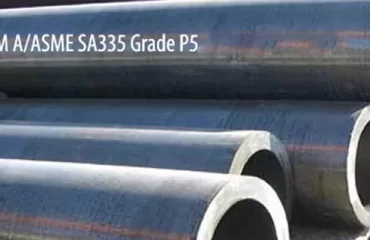
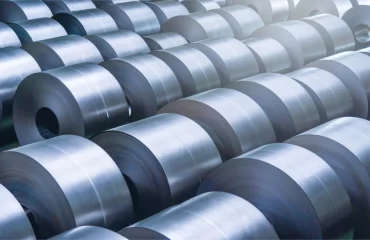
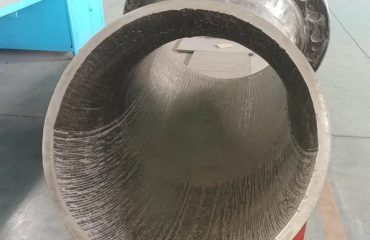
anda mesti log masuk untuk menghantar komen.